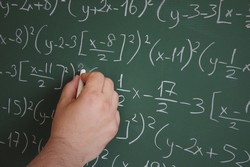Homotopy theory of higher categories
Similarly to the equivalence arising in the interpretation of mathematical equations, the theory of topological spaces adds the equivalence axiom. In homotopy, two topological spaces are considered the same if one can be deformed into the other. Within the EU-funded HOMALGHIGH (Homotopy algebras in homotopy theory and higher category theory) project, mathematicians sought to capitalise on this idea of homotopy between topological spaces. To this end, ideas and techniques from homotopy theory were applied to higher category theory. Higher category theory organises its objects of study into categories and offers a common language to describe them — that of weak n-categories. For instance, in computer science and physics, there are categories of topological spaces and other complex structures arising. HOMALGHIGH mathematicians focused on structures that resemble simple algebraic ones but that are, in fact, more complex. Through the so-called rigidification process, ways were devised to make them homotopy-equivalent to simpler structures. Rigidification for weak n-categories resulted in a new important type of higher categorical structures, called globular n-fold categories. Mathematicians have shown that these are equivalent to the classical structures of bicategories, which are ubiquitous in homotopy theory. New ways were also sought to describe the building blocks of a specific class of topological spaces called n-types and to compute invariants of iterated loop spaces. As topological spaces, these offer continuous maps from a circle to another topological space, the space of loops. HOMALGHIGH results that open the way to applications have been described in a series of publications uploaded to the arXiv repository(opens in new window). A better understanding of the connections between the homotopy and higher category theories is however needed to address the many challenges faced in practical implementation in computer science applications.







